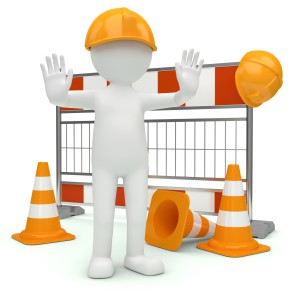The production of paper and cellulose requires the use of a wide range of resources: raw materials, energy, water and people, who are at the core of real competitiveness (whereby the latter are by no means a minor aspect). The challenge lies in making employees and employers aware of the risks related to their different tasks during the various working stages, as well as of how these risks can and should be managed through daily activities that can contribute to create a real «culture of health and safety». Paper Industry World carried out a survey, which will be published in the next July issue of the magazine, focussing on five European countries member to Cepi, which illustrated their way of developing a culture of health and safety to reach the «zero accident» objective.
Inés Chacón di Aspapel (Spanish Association of Pulp and Paper Manufacturers) told about«many projects, such as the Model Guidelines for H&S Management Systems(2005), the Manual for Improving Safety in Paper Machinery (2006), the Audiovisual Catalogue of Critical Situations (2009)- all with the support and funding from the Foundation for the Prevention of Occupational Hazards or the Manual of Observation of Safe Behaviour(2010), funded by the Industrial Observatory of Paper Sector of the Ministry of Industry, the Safety Manual in Stockage of Raw Materials and Finished Products and a Diagnosis of Ergonomical Risks in Paper Industry (…). Projects carried out in the last eight years (which) have had a lot to do with the improvement in accident frequency rates in the sector, which went down from 36.5 in 2004 to 15.78 in 2012, while incidence rates dropped from 61. 4 in 2004 to 25.07 in 2012».
Werner Auracher of Austropapier (the Association of the Austrian Paper Industry) told about the workgroup, which was established in 1987 and is still active now, as well as about the tools developed by the same group, the initiatives at mill level and the «Arbeitssicherheitspreis» award for the mills with zero accidents and the best performance on safety.
Andrew Braund, Director of Health, Safety and Social Affairs Confederation of Paper Industries (CPI), told about the difficult process of change, which has led to astonishing results: «The big question is how do you begin changing an industry, especially one with deep traditions and practices and «us and them» attitudes? We already had industry guidance, but hardly anyone was using it. A more direct approach and one that worked for us, is to convene a meeting of all the Chief Executive Officers, and Managing Directors, and tell them they had to change, because unless they were prepared to change they would feel the full force of the law, and full enforcement means: regular unannounced site visits; improvement/prohibition Notices being served where appropriate; paper machines being shut down; prosecutions and heavy fines».
Gerrit Jan Koopman, Dutch association of paper mills (VNP), told about «a wide variety of initiatives that encourage paper mills to work on safe behaviour with their employees, a committee of safety managers from all plants, an annual safety award which gives recognition to the plant with the best improvements made on safety» and «incident alerts communicated with a brief description of the incident, a picture of the situation and recommendations for solving the underlying causes. This is being communicated as ‘it can happen to you..’ alerts».
The Director of the Giuseppe Lazzareschi Foundation Angelo Del Carlo told us about the «Zero Objective» Safety Project, i.e. an Italian initiative launched in 2004 in collaboration with the Industrialists’ Association Assindustria Lucca, the local health company Ausl, Inail and the University of Pisa and supported by the trade organisation regrouping and working on behalf of the Italian Paper Industry representing pulp, paper and board manufacturing companies in Italy (Assocarta): «the aim of the project is to raise the awareness on and promote the culture of safety at all levels by rewarding those companies, which over the year have registered the best performance levels as regards accident frequency and severity both in absolute terms and in terms of relative improvement». Worth highlighting is furthermore the possibility, provided by the project, to involve paper mills employees through the certification of the number of working years spent without registering any accident.

